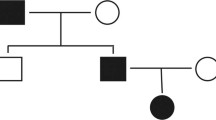Summary.
In neurons, pituitary adenyl cyclase activating peptide (PACAP) stimulates signaling cascades, involving cAMP and calcium. PACAP appears to play a role in up-regulation of tyrosine hydroxylase and dopamine β-hydroxylase via protein kinase C and/or protein kinase A. Furthermore, the PACAP gene (ADCYAP1) is located in chromosome 18p11, where linkage of bipolar disorders and schizophrenia has been reported. In this study, we scanned the coding region of the PACAP gene for mutations in 24 Japanese patients with schizophrenia and 24 Japanese patients with bipolar disorders. No variant in the coding region was found. One polymorphism, INV3-37A/T, in the third intron was detected. Case-control comparisons revealed no significant association between this polymorphism and schizophrenia or bipolar disorders. This study did not provide evidence for the contribution of the PACAP gene to the etiology of schizophrenia or bipolar disorders in the Japanese population.
Similar content being viewed by others
Author information
Authors and Affiliations
Additional information
Received September 18, 2000; accepted February 14, 2001
Rights and permissions
About this article
Cite this article
Ishiguro, H., Ohtsuki, T., Okubo, Y. et al. Association analysis of the pituitary adenyl cyclase activating peptide gene (PACAP) on chromosome 18p11 with schizophrenia and bipolar disorders. J Neural Transm 108, 849–854 (2001). https://doi.org/10.1007/s007020170034
Issue Date:
DOI: https://doi.org/10.1007/s007020170034




